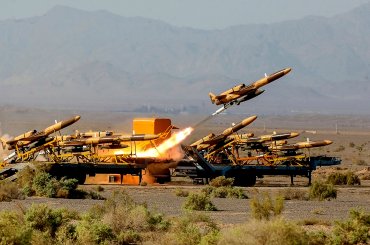One of the more remarkable yet less remarked upon moments of the recent Israeli massacre in Gaza came when the Qassam Brigades gave a press conference on 17 November. They had a message for the Israeli public: “It was your leadership,” they said, “that dragged you into this and into the shelters to score cheap political points.”
The causes for the latest Israeli massacre in Gaza are more complex than the Qassam Brigades statement made them out to be. The main driver is the restoration of Israeli “deterrence,” carried out through the evisceration of the resistance capacities of the Palestinian people and an attempt to obliterate the national will and resilience of Palestinian society. This rejuvenation requires an occasional blitz of the coastal strip, at least from the blinkered perspective of Israeli generals who speak only the language of force and Israeli politicians who speak only the language of fear.
But placing the balky analysis to the side, what’s more important and truly stunning is that the Qassam Brigades were making an open anti-government appeal to the people of Israel.
It was well-placed.
Any hard look at the numbers makes it clear that Israel undertakes bombardments of the Gaza Strip in the full expectation that they will lead to a short-term uptick in Palestinian rocketry. Of the twenty-six people killed due to rockets from Gaza over the last eight-and-a-half years, seven died after the inception of the Cast Lead and Pillar of Cloud massacres, operations supposedly engineered to stop rocket attacks.
Before the latter operation, a year had elapsed since the previous fatality due to munitions from Gaza. Twenty-five percent of the deaths from Palestinian weapons occurred in the one-month periods of the 2008-2009 and 2012 Israeli assaults – just one percent of the total time-span during which Palestinians have been launching rockets from there.
So stopping Palestinian rockets is not a plausible explanation for Israeli attacks. Indeed, the Israeli leadership – at best – does not care much about such deaths, posturing to the contrary. There’s a reason for that. The Zionist political and intellectual elite makes a lot of cantankerous noises about the rockets falling on southern Israel, usually accompanied by the question, how would you respond if rockets were falling on your head? But less frequently noted is whose heads those rockets are falling upon. Sderot and other southern cities are not merely populated by Jewish Israelis. They are also populated by mostly Mizrahi, usually lower-class, Jewish Israelis, the outcome of a planning regime which put some populations of Jews in some places and kept other populations of Jews in others.
Sderot, summoned up so sedulously as the very symbol of Israeli terror and fear due to Hamas’s – mostly ineffectual – rockets was initially a transit camp for Kurdish and Persian Jews. Later, it was populated by Moroccans. And still later, Ethiopians and the darker Jews of the ex-Soviet Caucasus. That was where they were dumped, with the European elites concerned, according to a 1950 Jewish Agency brochure, that the darker Jews might create “quarters of poverty, filth, unemployment, and crime.” Accordingly, there needed to be “a greater effort to settle the immigrants in the countryside.” And so they were.
The Ashkenazi founders and the “new classes” did not, for the most part, choose to live so close to the Gaza Strip, whence Palestinians still came in those times to try to harvest crops or return to their land, and later from which came the Fedayeen, before the Israeli “border wars” had hardened the armistice lines of Israel into impermeable steel.
And so Tel Aviv, the cosmopolitan, Ashkenazi, cultural core of Israel could remain distant from the front lines of the conflict created by the policies pursued by its economic and political elites, while the cannon fodder on the Israeli periphery would bear their brunt.
A glance at the names of the dead from the rocket attacks on Sderot and elsewhere reveal much of the truth of Israel’s “security” policies. Of the twenty-six dead, four are likely Ashkenazi, or of European extraction. Two are Bukharian. Four are Moroccan. One is Ethiopian. One is Persian. One is Russian. And five are Mizrahi. Most of the rest seem a mixture of Thai and Palestinian, either workers or soldiers. Given that many Israeli Jews of all backgrounds have “Hebraicized” names, not all are clearly identifiable. But given mappings of ethnicity and class within the Israeli Jewish population, the pattern is clear: defensive Palestinian rockets do not tend to kill the rich within Israel, but the poor.
Some in Sderot have been aware of what their government has done to them. In January 2008, at a demonstration at the Erez Crossing against the blockade, a 17 year old from Sderot, Shir Shudzik, said: “Every time I go to a train station or to a supermarket, and I hear the PA system switching on, I jump, because it sounds like the beginning of the rocket alarm. But I know I’m not alone in this situation, that people are suffering even worse on the other side.” Shudzik knew what the rulers of Israel do not want known: that they are responsible for nearly every death on both sides of the conflict. But as she also knew very well, any comparison between the plight of Israelis hiding from Qassams and Palestinians in Gaza hiding from F-16s and Apaches cannot be exact. There’s no equivalence between the mechanized and profitable violence of the Israeli army and the guerrilla defense of the Palestinian militias.
Of course, Shudzik was isolated, and the dominant response within Israeli society is not one of solidarity. Instead, it is one of fear, support for “retaliatory” violence, as well as a hankering for the feeling of security provided by the “Iron Dome” missile batteries.
That is placing to the side whether “Iron Dome” even works. It probably does not, except in the traditional sense in which policies work in Israeli society: they work to funnel American and Israeli tax dollars to the American and Israeli military contractors which manufacture the weapons off which the American and Israeli elites get fat, while at the same time doing good ideological work in positioning the state as the guarantor of the “security” from threats which it itself provokes – a social role which Charles Tilly famously likened to that of organized crime.
Indeed, despite the government’s hyper-ventilations about the threat posed by rocket fire, it has no problem putting poorer Israelis directly in harm’s way. That threat is exactly what creates and reinforces the atmosphere of fear and jingoism that underlays the “security” discourse which justifies every act of state aggression and state terror. When the government complains about the threat posed by the rockets to the people of southern Israel, there is zero reason to take it at its word, as it is a threat the government “cares” about only after its own policies have magnified it – a dynamic which will, however, shift as the operational capacities of the missile brigades in Gaza extend to the larger metropolitan areas within which affluent Israelis are ensconced.
Once one sees Israeli “security” policies as simultaneously a ruling-class strategy of social control and a framework for capitalist accumulation, one can assess where they are most vulnerable.
Gramsci, in theorizing revolutionary strategy, differentiated between a “war of position” and a “war of movement.” The former comprised a series of maneuvers operating on multiple levels simultaneously, but oriented to breaking down the barriers in civil society which protected the iron core of class power. The latter referred to an open, frontal assault on state power – the model of the Russian Revolution, or most classic anti-colonial struggles.
A “war of position” corresponds to a mode of elite control characterized by a mix of domination and consent – hegemony – whereas a “war of movement” corresponds to a mode of elite control premised essentially on brute force – domination.
In the Qassam Brigades’ clear appeal to the people of Israel to assign culpability to the government whose policies of occupation and aggression make retaliatory rocket fire inevitable, they were making a carefully calibrated pitch, intended to fracture the hegemony of the “security” discourse – a war of position in the Gramscian sense.
Of course, most of the Hamas propaganda is not nearly so sophisticated, mostly consisting of threats to the Israeli population, thereby bolstering the security discourse which some fragments of their messaging is intended to erode. The end result is a muddle, with most Israelis still marinated in fear. But the move by the Qassam Brigades, even if utterly contradicted by other rhetoric, is still interesting, for the latent strategy is one that is oriented towards drawing attention to the fissures within an Israeli society that is already among the most unequal in the industrialized world, and clarifying to the Israeli people that although they are without question members of the colonizing class, they too are victims of the Israeli elites, and that if they wish to stop living in fear, they ought stop foisting the blame for their fear upon the rockets of the resistance and start looking to their own venal and cynical rulers and the larger system of power within which those rulers nest.
Thanks to Matan Kaminer for help with names, and other corrections.
This piece was originally published at Jadaliyya.


Great analysis. Thanks Max (and thanks Qassam Brigades for the lovely propaganda).